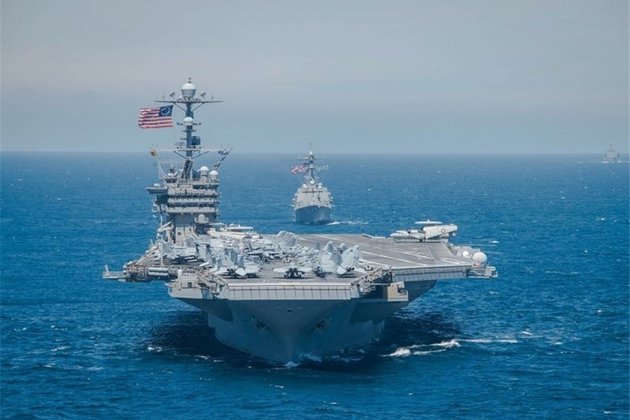Politics
Modi’s new financial inclusion plan is a step in the right direction
Authors: Akshay Gakhar and Geethanjali Nataraj, Observer Research Foundation
On Independence Day 2014, India’s Prime Minister Narendra Modi launched his financial inclusion plan to provide a bank account to every Indian household. His ‘Jan-Dhan Yojana’ (Scheme for People’s Wealth) — which, in typical Modi vernacular, plays on rhyming words — seeks to provide financial independence to unbanked Indians through a two-phase plan.
Phase one focuses on providing every household in India with a free zero-balance bank account and a RuPay debit card — which allows for electronic payment at all Indian banks — with an aim of increasing financial literacy among the poor. Account holders will also receive up to Rp100,000 (US$1650) of accident insurance and an overdraft of Rp5000 (US$82) after six months. Phase two of the plan, starting 15 August 2015, will be focused on providing micro-insurance and pension schemes for those in the unorganised sectors.

Whether or not Modi’s financial inclusion plan will be a success relies on probably the biggest challenge his government will face in rolling it out: outreach. The early response to the program has been good. The government targeted 10 million accounts to be opened on the first day. They exceeded their target by 50 per cent as 15 million accounts were opened at nearly 80,000 government-run camps.
Despite this, there are concerns about whether banking facilities can be provided to the most remote parts of India. The answer perhaps lies in mobile technology. In his Independence Day speech, the prime minister expressed concerns that Indians have mobile phones but not bank accounts. With over 900 million mobile subscriptions in India, mobile banking is a great opportunity to reach the government’s target of 100 per cent banking coverage.
Despite low smart phone penetration, mobile banking can facilitate widespread usage of formal banking facilities through technologies aimed at all mobile phone models, particularly phones that lack internet connectivity. Telephone banking and technologies such as Unstructured Supplementary Service Data, which works in a similar way to text messaging services, will allow people in remote parts of the country to use basic banking facilities. It is quite ironic to note that a technology less than two decades old is vital in spreading the adoption of a service that has been available for centuries.
In terms of economic growth and development, the importance of financial inclusion cannot be understated. At the micro level, it provides social security for each household in India, as they are no longer subject to extortion practices arising from banking in the informal sector, including predatory lending by loan sharks. The government will also have a direct means to provide welfare to a person in need, which in turn helps curb the corruption arising from delivering welfare cash-in-hand.
At the macro level, financial inclusion has a major impact on economic growth. It will help to formalise many industries as income can be catalogued and taxed more efficiently. This in turn leads to better estimates of economic data, allowing for more transparency in the economy and more accurate forecasts. Increased tax revenue would increase government spending, allowing for increased financing of government led infrastructural developments. More bank accounts would also lead to an increase in reserves for Indian banks. This allows for more loans to be taken out and increases consumption and investment in the economy, both major components of GDP.
One of the Modi government’s major concerns is India’s stubbornly high inflation rate following the global financial crisis. In a society with very few or no unbanked people, the Reserve Bank of India can implement monetary policy decisions with greater effect. As there are more people with bank accounts, high interest rates will result in more people saving, thus reducing the inflation rate.
Despite its popularity, the financial inclusion scheme has its fair share of critics. Apart from the issue of outreach, critics argue that providing India’s poor with a bank account is not enough to ensure financial inclusion. Without there being tailor-made financial products to suit the needs of the poor, the plan will lead to many dormant accounts making the scheme irrelevant. Phase two of the plan aims to tailor financial products to the poor through pension schemes and micro insurance, but India is still a long way from being able to provide products such as short-term or low collateral loans.
Another concern is that the scheme could result in an unstructured dole out of subsidies, as there is currently no clear method of collecting repayments once an overdraft has been disbursed. This issue is further aggravated by the fact that the accounts are being offered to everyone, with screening being done later. As a result, people who already have bank accounts have access to the scheme, making the possibility of misuse a valid concern.
Some of the concerns mentioned above can be alleviated through stricter regulation and monitoring. Additionally, it is imperative for the government to ensure that their scheme is appropriate for the people it is meant for. The best way to do that would be through providing tailored financial products and services to the average owner of a bank account through the Jan-Dhan Yojana. This will ensure widespread adoption, increased inclusion of the population into India’s financial system and potentially lower risks for banks.
India is on the path to becoming a cashless society. Prime Minister Modi’s Jan-Dhan Yojana is one more step towards a more developed India. And possibly a big step — if successful.
Dr Geethanjali Nataraj is a Senior Fellow and Akshay Gakhar is a Research Intern at the Observer Research Foundation, New Delhi.
Read this article:
Modi’s new financial inclusion plan is a step in the right direction
Politics
US Navy Carrier Conducts Exercises in South China Sea

TEHRAN (Tasnim) – A US Navy aircraft carrier conducted exercises in the contested South China Sea on Friday, the US navy said in a statement. –
A strike group led by the USS Ronald Reagan conducted flight operations and high-end maritime stability operations and exercises, the statement said, Reuters reported.”Integration with our joint partners is essential to ensuring joint force responsiveness and lethality, and maintaining a free and open Indo-Pacific,” US Navy Commander Joshua Fagan, Task Force 70 air operations officer aboard USS Ronald Reagan, was quoted as saying.The drill comes amid heightened tensions between the United States and China.
Washington has criticized Beijing over its novel coronavirus response and accuses it of taking advantage of the pandemic to push territorial claims in the South China Sea and elsewhere.The United States has long opposed China’s expansive territorial claims in the South China Sea and has sent warships regularly through the strategic waterway.China has objected to such exercises and said the US rejection of its claims in the South China Sea has raised tension and undermined stability in the region.China claims nine tenths of the resource-rich South China Sea, through which some $3 trillion of trade passes a year. Brunei, Malaysia, the Philippines, Taiwan and Vietnam have competing claims.
Politics
How China is using tourism for geopolitical goals
The Chinese government has a degree of leverage over its tourists that other governments do not enjoy. Many Chinese tourists are new to international tourism and have limited international language abilities

Decades of astonishing economic growth have given China new tools for extending its influence abroad and achieving its political goals.
(more…)













